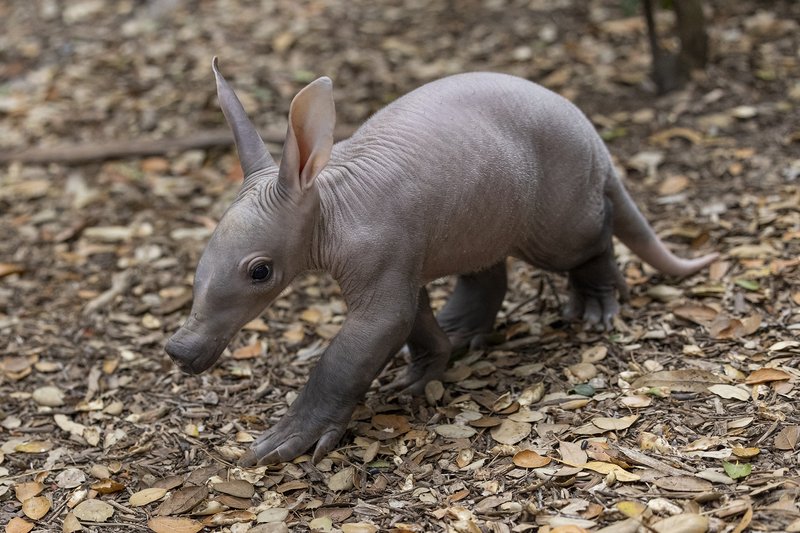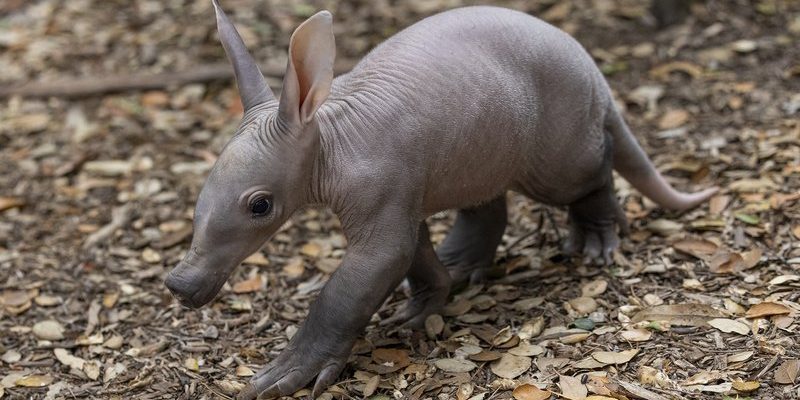
Aardvarks, often overlooked in favor of more glamorous animals, are remarkable in their own right. Found across sub-Saharan Africa, they’re nocturnal mammals with a knack for digging into ant and termite mounds. So, how do they raise their young in a harsh and competitive environment? Join me as we explore the fascinating journey of aardvark motherhood, from pregnancy to the moment their young take their first steps into the wild.
The Aardvark’s Life Cycle
Before diving into parenting, it’s important to grasp the overall life cycle of the aardvark. Aardvarks generally live around 14 years in the wild, and their life begins with a unique birth process. After a gestation period of about seven months, a mother aardvark gives birth to a single cub. This cub is blind and vulnerable, weighing roughly a pound at birth. It’s a bit like bringing a new baby home—you’ve got to be cautious, nurturing, and ready to provide constant attention.
During the first few months, the cub is completely dependent on its mother. Aardvark mothers tend to their young with great care. They create a cozy burrow where the cub can grow safe from predators. You might be wondering how they manage to balance foraging for food while caring for their offspring. It’s a juggling act, much like a parent trying to work from home while keeping an eye on their kids!
Mother Aardvark’s Role
The role of a mother aardvark is central to her young cub’s survival. After giving birth, she dedicates a significant amount of time to nursing. For the first few weeks, the cub will nurse exclusively, slowly transitioning to solid food as it grows. This formula of milk is rich in nutrients, providing the cub with everything it needs to develop strong bones and muscles.
Interestingly, the mother will only leave the burrow for short periods, usually at night when she forages for ants and termites. Her exceptional digging skills come into play here, as she creates new tunnels and mounds to feed herself and, eventually, her cub. It’s a bit like going grocery shopping—she’s out hunting for the best snacks to share with her little one.
Socializing and Learning
As cubs grow, socialization becomes crucial. Around two months old, a cub starts to explore beyond the safety of the burrow. It’s a delicate process—like teaching a toddler to walk, but in a world filled with dangers. During this time, the mother remains close, teaching her cub essential skills such as digging, finding food, and being aware of predators.
You might think this sounds like a simple learning curve, but for aardvarks, it’s survival training. The cub must learn to dig effectively for ants and termites, which will eventually be its primary food source. It’s essential for their development, ensuring they become independent and capable of surviving on their own. The bond formed during this learning stage is critical, as it reflects the trust and reliance between mother and cub.
Solo Survival and Independence
By the time an aardvark cub reaches six months, it’s starting to gain independence. The mother will begin to leave it alone for longer periods as it hones its skills. It’s a bit like sending your child off to school for the first time—you want to be there to support them, but they need to learn to stand on their own.
At around a year old, cubs are generally ready to venture out on their own. They’ve mastered the skills of foraging and understanding their environment. The mother will continue to offer support, but her role shifts from hands-on teacher to a more watchful guardian. By this time, cubs will have developed the instincts necessary to navigate the challenges of their habitat, including finding food and evading threats.
The Challenges Aardvarks Face
Raising young in the wild isn’t without its challenges. Aardvarks face numerous threats from predators such as lions, hyenas, and even large snakes. While adult aardvarks are relatively safe due to their size and strong digging abilities, cubs are particularly vulnerable. This is a time when every burrow and dig site must be approached with caution, as the young ones are learning to navigate a world fraught with danger.
Weather conditions can also play a significant role. In some regions, drought can impact the availability of food and water. When resources become scarce, both mothers and cubs must adapt quickly. This adaptation often involves moving to new areas in search of food, making it vital for them to have good navigation skills. Much like a family moving to a new city for better opportunities, sometimes the search for survival means relocating.
In the wild, aardvarks demonstrate a mix of nurturing and resilience in their parenting style. From the moment a cub is born, the mother’s life revolves around protecting and teaching her young. Each stage of growth—from nursing and learning to eventual independence—paints a picture of a deeply connected family unit.
Being a parent is no easy feat, and aardvarks have evolved some remarkable strategies over time. As they dig, forage, and protect their young, they remind us of the importance of parental guidance in any species. As we continue to learn about these unique creatures, we can appreciate not only their survival tactics but also the lessons they impart about family, growth, and resilience in the wild.

